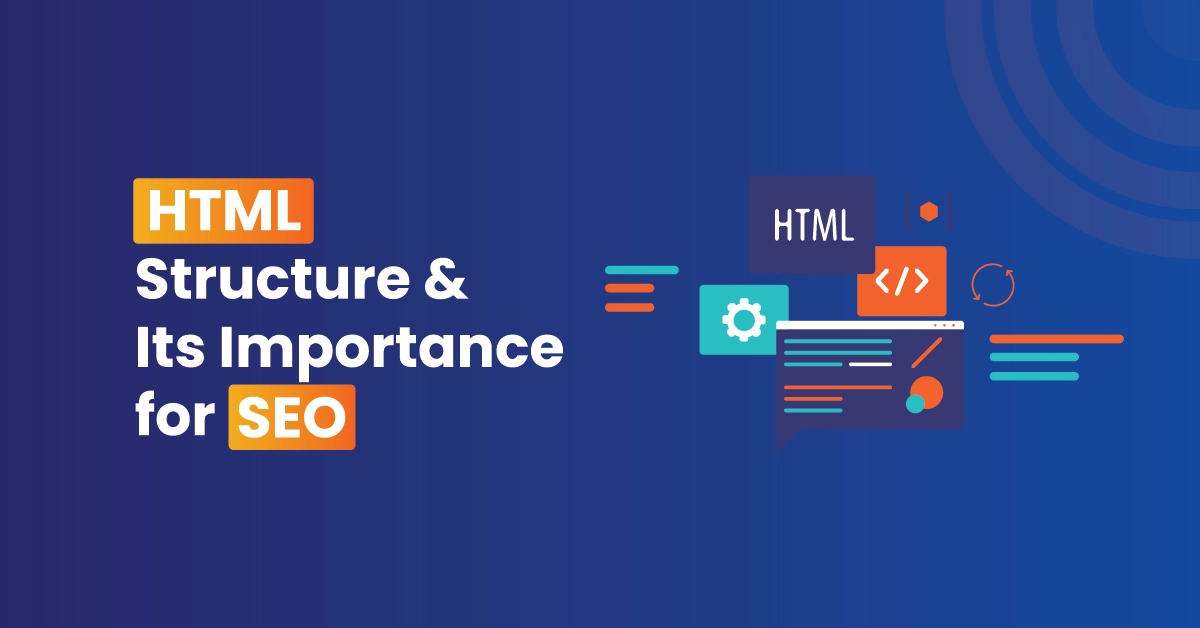Although most people would not expect it, HTML structure does affect SEO. Continue reading to find out how HTML actually helps with search engine optimization.
Does HTML Structure Matter for SEO?
Yes, A lot of factors are considered.
Some of the SEO-related things to keep in mind about HTML structure are:
- Count of Heading tags on a given page.
- The hierarchy of Heading tags.
- If anything is a <strong> or a <b> tag.
- The use of tables against CSS for styling.
- How high text appear in the source code?
- Use of img tag with alt and title
What About the Remaining HTML Elements?
There was a time when search engines mainly used lexical searches. Basically, it means looking for the document where the term is used most frequently. The scoring systems used by those search engines prioritized bolded terms, counted H1s more than H2, etc.
Search has shifted its focus from the lexical to the semantic. Semantic search goes beyond a simple word-for-word analysis by transforming the material into vectors and then applying algorithms to decipher the “meaning” behind the query and the content. The majority of the HTML is removed when the content is converted to vectors.
Here, rendering is just as important as vectors. The days of search engines relying on HTML hints are over; now, search engines can render JavaScript and investigate the DOM.
They can utilize algorithms like passage-bert to find the most relevant part of the page, and they can use a variety of techniques to find the primary heading, regardless of whether it’s in the <h1> element or not.
Indeed, <h1> serves as a suggestion in this context, along with font size, content-relevant placement, and the sentence itself. It’s common knowledge that numerous SEOs will use an H1 tag to label a small portion of the navigation, even though there is a 30-point font in the center of the screen that is actually a <span> tag.
Unlike in the past, modern search engines are able to accurately identify the large <span> tag as the page’s “heading” in the majority of cases.
The correct use of heading tags and nested elements is still required. Keep in mind that search engines still care about accessibility. If you do it, it will be better in every way: cleaner, easier, more accessible, and generally better. The point I’m trying to make is that search engines aren’t limited to using only markup.
Multiple H1 tags are another common misunderstanding. One of my most vexing complaints is this.
The advent of HTML5 and other elements has made the use of numerous H1 tags on a single page quite acceptable—and, in certain accessibility-related situations, mandatory. In terms of search engine optimization, this won’t have any bearing.
You can also read: Importance of Website Hosting in SEO
What does a search engine do?
In basic terms:
- Title tags, important headings and body text will all be picked up by these tools.
- After that, they will feed all of those sections into a machine learning algorithm and ranker after running lexical and semantic metrics to see how relevant they are to the question.
- The implication is that the specific type of heading (H1 or H2) is probably less important than the fact that it was recognized as such by their algorithm.
Similarly, span and div tags, bold text, etc. all follow this rule. Whether or not the algorithm claims it is relevant to the query is the most important factor.
Which parts of HTML are important, then?
- When it comes to search engine optimization, HTML structure is often the deciding factor.
- If you place your canonical tag in the <body> element instead of the <head> element, for instance, it will not be seen.
- In the same way, Googlebot’s Chrome version will close the <head> tag and start the body automatically if you insert a <div> inside it.
- This could cause some of your critical SEO tags to be moved into the body and disregarded.
- You might corrupt your entire site by pasting code into the wrong spot in Google Tag Manager. To overcome this, put SEO tags higher in the <head> element than any other tags.
- Even though visitors won’t be able to discern the difference, search engines will not see a <span> with an onclick= event as a link if it is used instead of a <a> tag with a href property. Please refrain from doing that.
- Image <img> tags with a src= property are required by search engines. It’s surprising how many lazy loading plugins use srcset= instead of src=, which, according to my most recent tests, is compatible with modern browsers but doesn’t get image ranking credit from Google. So don’t forget to use <img> tags with a src= instead of srcset=.
Conclusion
For search engine optimization, even though valid HTML doesn’t affect your ranking, it will help you avoid technical problems that harm SEO and may reduce the amount of work you have to put into making your site accessible. This is why it is always better to get professional SEO services.

